-
Postów
8 591 -
Dołączył
-
Ostatnia wizyta
Typ zawartości
Profile
Forum
Blogi
Wydarzenia
Galeria
Pliki
Sklep
Articles
Market
Community Map
Odpowiedzi opublikowane przez ekolog
-
-
NGC 7789: Róża Karoliny
NGC 7789: Caroline's Rose
Guillaume SeigneureFound among the rich starfields of the Milky Way, star cluster NGC 7789 lies about 8,000 light-years away toward the constellation Cassiopeia. A late 18th century deep sky discovery of astronomer Caroline Lucretia Herschel, the cluster is also known as Caroline's Rose. Its flowery visual appearance in small telescopes is created by the cluster's nestled complex of stars and voids. Now estimated to be 1.6 billion years young, the galactic or open cluster of stars also shows its age. All the stars in the cluster were likely born at the same time, but the brighter and more massive ones have more rapidly exhausted the hydrogen fuel in their cores. These have evolved from main sequence stars like the Sun into the many red giant stars shown with a yellowish cast in this lovely color composite. Using measured color and brightness, astronomers can model the mass and hence the age of the cluster stars just starting to "turn off" the main sequence and become red giants. Over 50 light-years across, Caroline's Rose spans about half a degree (the angular size of the Moon) near the center of the wide-field telescopic image.
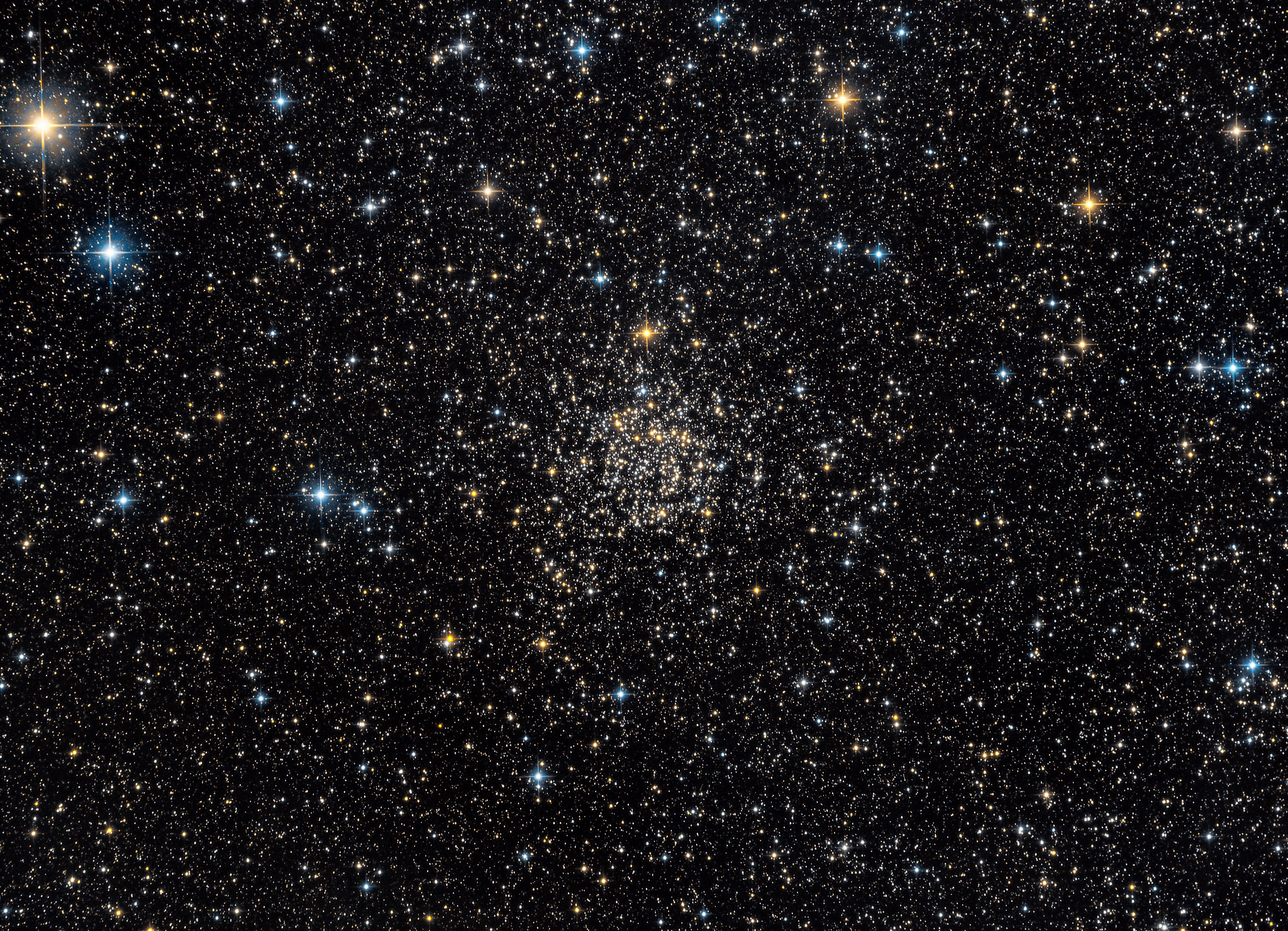
Pozdrawiam -
W zachodnim Teksasie, pracownicy średniego rozmiaru magazynu wyczuli w pewnym momencie zapach gazu. Rozsądnie myśląc, kierownictwo ewakuowało wszystkich z budynku wyłączając wszystkie potencjalne źródła zapłonu, w tym energię elektryczną. Po ewakuacji wezwano dwóch techników z zakładu gazowego. Po wejściu przez nich do budynku, okazało się, że nie mogą się w nim odnaleźć ze względu na panujące w nim ciemności. Ku ich frustracji oświetlenie zupełnie nie działało. Świadek całego zajścia opisał później, że widział jak jeden z techników sięgnął do kieszeni i wyciągnął z niej przedmiot przypominający zapalniczkę. Następnie wykonał jakąś czynność z tym przedmiotem i cały skład eksplodował , wyrzucając fragmenty konstrukcji nawet na odległość 5 kilometrów. Po przeszukaniu szczątków budynku nie znaleziono ani śladu po technikach. Znaleziono za to nietkniętą przez eksplozję zapalniczkę. Technik, podejrzany o spowodowanie eksplozji, nigdy nie był oceniany przez swoich kolegów jako szczególnie bystry.
-
 1
1
-
-
Plejady - głębia i zapylenie
The Pleiades Deep and Dusty
Juan Carlos Casado (TWAN, Earth & Stars), Miquel Serra-Ricart & Daniel Padron, FECYTThe well-known Pleiades star cluster is slowly destroying part of a passing cloud of gas and dust. The Pleiades is the brightest open cluster of stars on Earth's sky and can be seen from almost any northerly location with the unaided eye. The passing young dust cloud is thought to be part of Gould's Belt, an unusual ring of young star formation surrounding the Sun in the local Milky Way Galaxy. Over the past 100,000 years, part of Gould's Belt is by chance moving right through the older Pleiades and is causing a strong reaction between stars and dust. Pressure from the stars' light significantly repels the dust in the surrounding blue reflection nebula, with smaller dust particles being repelled more strongly. A short-term result is that parts of the dust cloud have become filamentary and stratified. The featured deep image also captured Comet C/2015 ER61 (PanSTARRS) on the lower left.

Pozdrawiam-
 1
1
-
-
Kompaktowy samolot kosmiczny nie przewozi załogi, ale w ciągu najbliższych lat będzie transportować ładunki na Międzynarodową Stację Kosmiczną i wykonywać inne misje na orbicie wokół Ziemi. W sobotę pojazd ukończył ważny etap rozwoju.
Pozdrawiam
-
Planeta owa krąży blisko czerwonego karła Proxima Centauri który powoli zbliża się ku nam wraz z nią - link
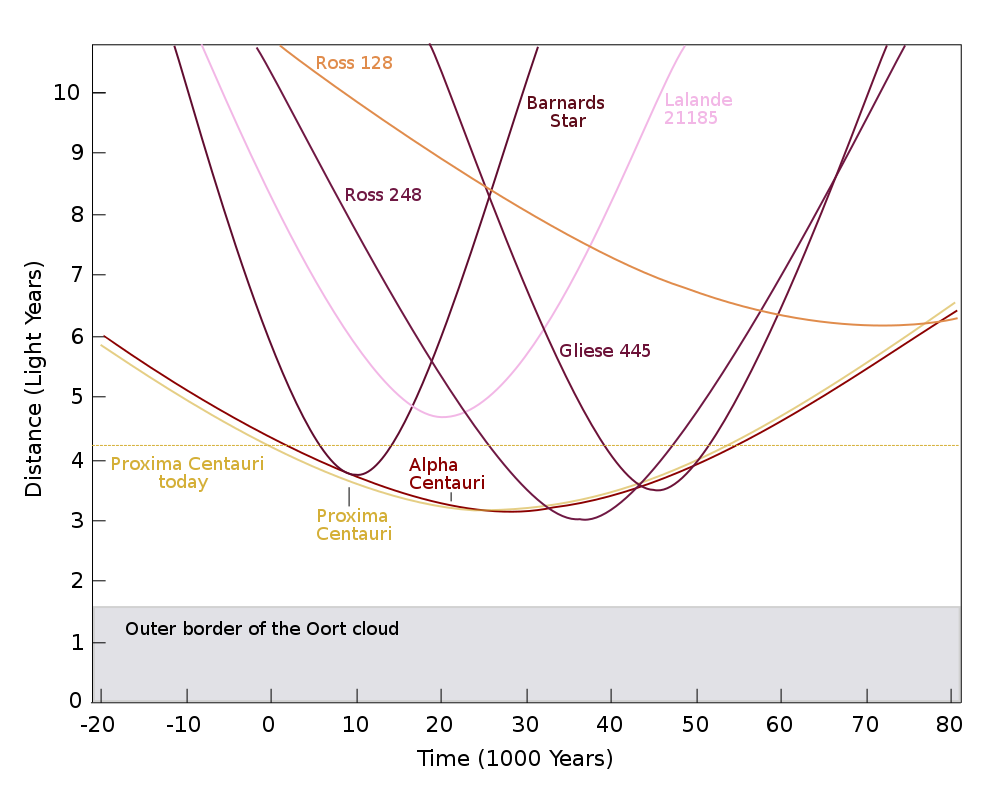
To oznacza że my (jako ludzkość/gatunek) będziemy mogli szybciej dostać się tam za 27 tysięcy lat.
Aby zobaczyć tę planetę można jeszcze przybliżyć się do niej pozornie. Jeśli w kosmos wyślemy przesłonę (w kształcie kwiatu słonecznika) i odpowiednio duży teleskop wiszący przed tą przesłoną (w stosunku do gwiazdy) to przesłona odetnie światło gwiazdy i udać się może fotografia tej planety już za kilka lub kilkanaście lat. Wszystko jest kwestią ilości pieniędzy.
Pozdrawiam
-
Kometa Machholz zbliża się do Słońca
Comet Machholz Approaches the Sun
NASA, SOHO, LASCO, Barbara Thompson (NASA's GSFC)
Explanation: Why is Comet Maccholz so depleted of carbon-containing chemicals? Comet 96P/Machholz's original fame derives from its getting closer to the Sun than any other short period comet -- half as close as Mercury -- and doing so every five years. To better understand this unusual comet, NASA's Sun-monitoring SOHO spacecraft tracked the comet during its latest approach to the Sun in October. The featured image composite shows the tail-enhanced comet swooping past the Sun. The Sun's bright surface is hidden from view behind a dark occulter, although parts of the Sun's extended corona are visible. Neighboring stars dot the background. One hypothesis holds that these close solar approaches somehow cause Comet Machholz to shed its carbon, while another hypothesis posits that the comet formed with this composition far away -- possibly even in another star system.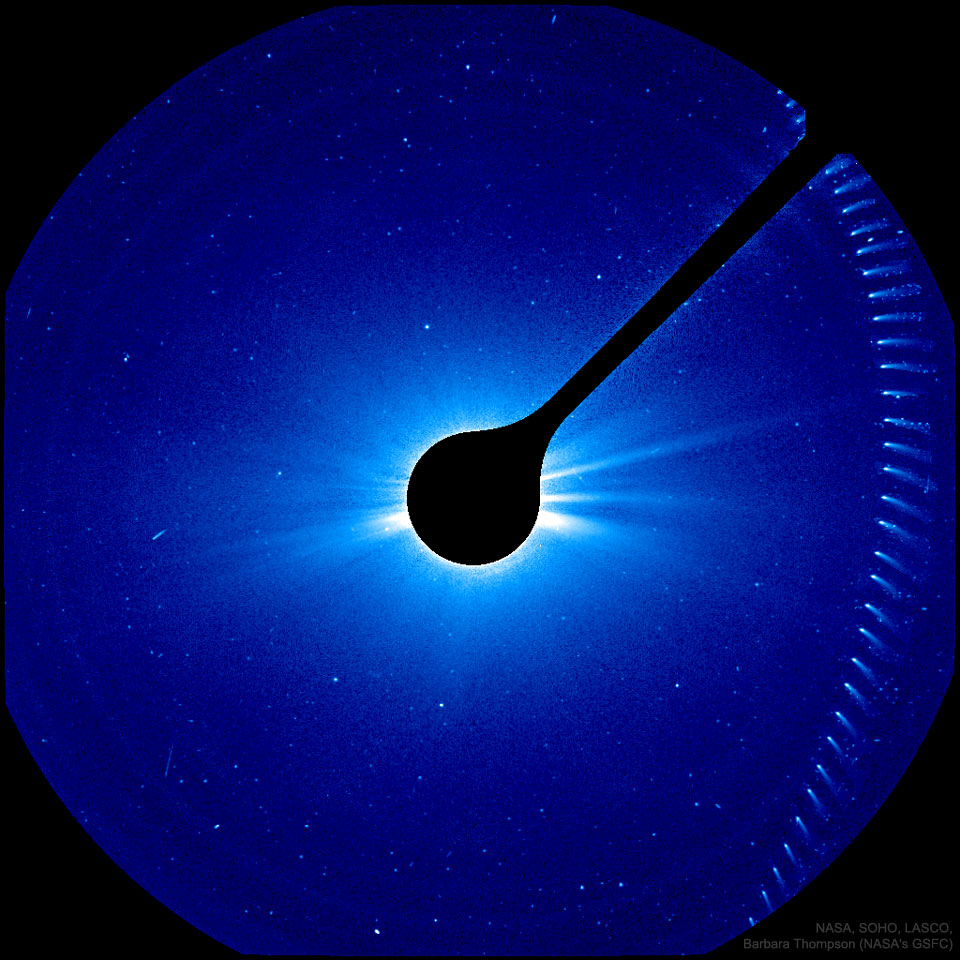
Pozdrawiam-
 1
1
-
-
Godzinę temu, wampum napisał:
Znalazłem na fejsie, wciągnęło więc przeczytałem do końca.Brawo dla autora!.
...
Tym drugim studentem był Albert Einstein. Einstein napisał książkę zatytułowaną "Bóg a nauka" w roku 1921.
No ale (jeśli nawet on to był) to bardzo młody Einstein.
Potem nauka (nie tylko astronomia i fizyka, też biologia, "Australopitekologia") podszeptywała mu argumenty i finalnie był innym - przeczytaj to od początku do końca (niewiele tego)
https://pl.wikiquote.org/wiki/Albert_Einstein
A tymczasem tam
http://www.bbc.com/news/uk-41956191
napisano, że
Jutro rano Anglicy będą mogli zobaczyć Wenus stykającą się z Jowiszem
Zdumiało mnie, że materiał zilustrowano zdjęciem Wenus ale na tle Słońca - link:



To nie ma zdjęć koniunkcji planet, że trzeba było mieszać Słońce do ilustracji tego tematu?

Pozdrawam
-
Szczęśliwe niebo nad Los Angeles
A Happy Sky over Los Angeles
Dave Jurasevich (Mt. Wilson Observatory)Sometimes, the sky may seem to smile over much of planet Earth. On this day in 2008, visible the world over, was an unusual superposition of our Moon and the planets Venus and Jupiter. Pictures taken at the right time show a crescent Moon that appears to be a smile when paired with the planetary conjunction of seemingly nearby Jupiter and Venus. Pictured here is the scene as it appeared from Mt. Wilson Observatory overlooking Los Angeles, California, USA after sunset on 2008 November 30. Highest in the sky and farthest in the distance is the planet Jupiter. Significantly closer and visible to Jupiter's lower left is Venus, appearing through Earth's atmospheric clouds as unusually blue. On the far right, above the horizon, is our Moon, in a waxing crescent phase. Thin clouds illuminated by the Moon appear unusually orange. Sprawling across the bottom of the image are the hills of Los Angeles, many covered by a thin haze, while LA skyscrapers are visible on the far left. Hours after the taking of this image, the Moon approached the distant duo, briefly eclipsed Venus, and then moved on. This week, another conjunction of Venus and Jupiter is occurring and is visible to much of planet Earth to the east just before sunrise.

Pozdrawiam
-
 2
2
-
-
Kolorowy Księżyc
A Colourful Moon
Alain Paillou
The Moon is normally seen in subtle shades of grey. But small, measurable color differences have been greatly exaggerated in this mosaic of high-resolution images captured near the Moon's full phase, to construct a multicolored, central moonscape. The different colors are recognized to correspond to real differences in the mineral makeup of the lunar surface. Blue hues reveal titanium rich areas while more orange and purple colors show regions relatively poor in titanium and iron. The intriguing Sea of Vapors, or Mare Vaporum, is below center in the frame with the sweeping arc of the lunar Montes Apenninus (Apennine Mountains) above it. The dark floor of 83 kilometer diameter Archimedes crater within the Sea of Rains, or Mare Imbrium, is toward the top left. Near the gap at the top of the Apennine's arc is the Apollo 15 landing site. Calibrated by rock samples returned by the Apollo missions, similar multicolor images from spacecraft have been used to explore the Moon's global surface composition.Pozdrawiam
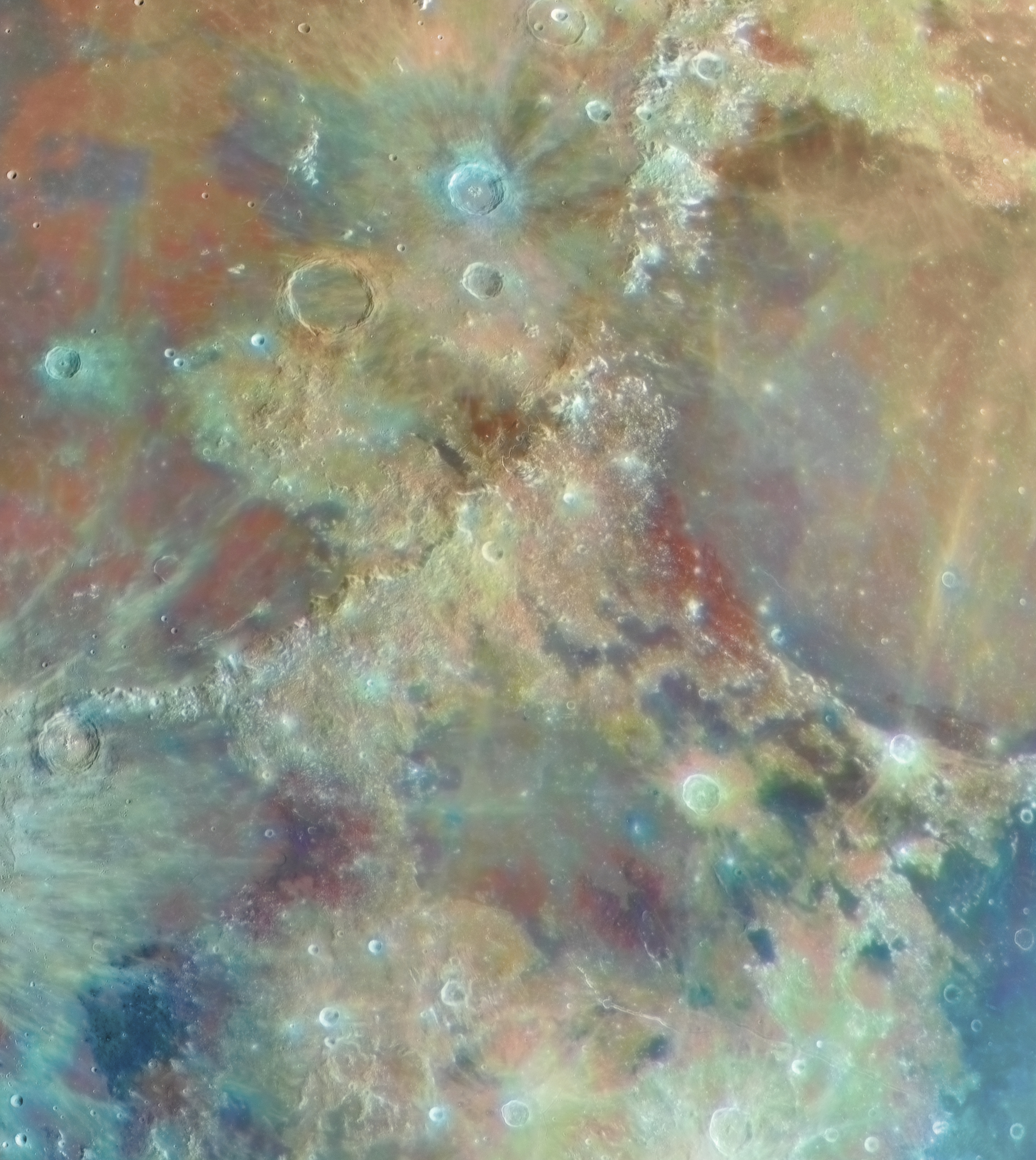
-
 1
1
-
-
http://fakty.interia.pl/nauka/news-kilkunastometrowa-planetoida-przeleci-blisko-ziemi,nId,2449689
Przelot tak małych, kilkunastometrowych, planetoid często odkrywany jest dopiero w ostatnich momentach zjawiska.
Ten - jutrzejszy - jest przewidywany dzięki jej odkryciu w 2012 roku w ramach programu PAN-STARRS.Planetoida 2012 TC4 minie Ziemię w odległości osiem razy mniejszej niż odległość do naszego naturalnego satelity.
Link do zdjecia ilustracyjnego:
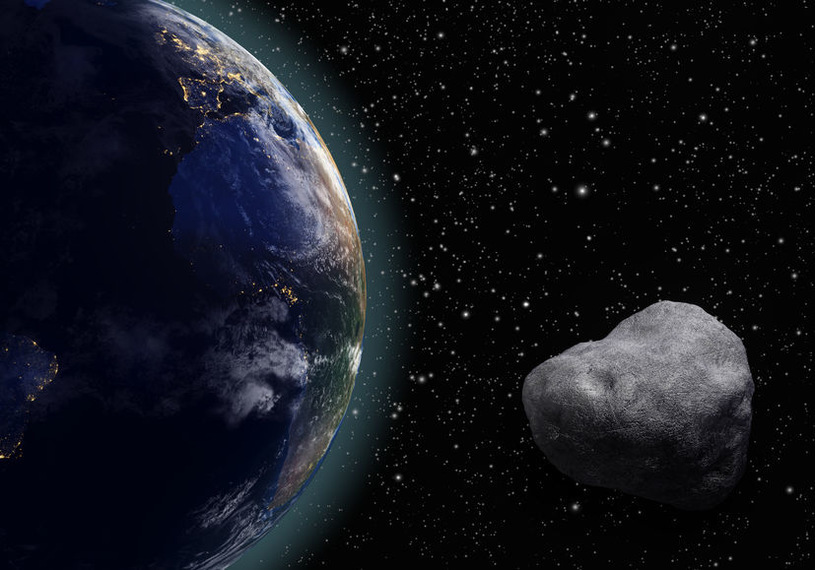
Pozdrawiam
-
Trójkątny wiecheć Williamina Fleming
Williamina Fleming's Triangular Wisp
Sara WagerKobieta uhonorowana APOD'em - miła wiadomość!

Chaotic in appearance, these tangled filaments of shocked, glowing gas are spread across planet Earth's sky toward the constellation of Cygnus as part of the Veil Nebula. The Veil Nebula itself is a large supernova remnant, an expanding cloud born of the death explosion of a massive star. Light from the original supernova explosion likely reached Earth over 5,000 years ago. Blasted out in the cataclysmic event, the interstellar shock waves plow through space sweeping up and exciting interstellar material. The glowing filaments are really more like long ripples in a sheet seen almost edge on, remarkably well separated into the glow of ionized hydrogen atoms shown in red and oxygen in blue hues. Also known as the Cygnus Loop, the Veil Nebula now spans nearly 3 degrees or about 6 times the diameter of the full Moon. While that translates to over 70 light-years at its estimated distance of 1,500 light-years, this field of view spans less than one third that distance. Often identified as Pickering's Triangle for a director of Harvard College Observatory, the the complex of filaments is cataloged as NGC 6979. It is also known for its discoverer, astronomer Williamina Fleming, as Fleming's Triangular Wisp.

Pozdrawiam-
 1
1
-
-
NGC 1055 Zbliżenie
NGC 1055 Close-up
Processing - Robert Gendler, Roberto Colombari. Data - European Southern Observatory, Subaru Telescope (NAOJ), et al.
Big, beautiful spiral galaxy NGC 1055 is a dominant member of a small galaxy group a mere 60 million light-years away toward the aquatically intimidating constellation Cetus. Seen edge-on, the island universe spans over 100,000 light-years, a little larger than our own Milky Way. The colorful stars in this cosmic close-up of NGC 1055 are in the foreground, well within the Milky Way. But the telltale pinkish star forming regions are scattered through winding dust lanes along the distant galaxy's thin disk. With a smattering of even more distant background galaxies, the deep image also reveals a boxy halo that extends far above and below the central bluge and disk of NGC 1055. The halo itself is laced with faint, narrow structures, and could represent the mixed and spread out debris from a satellite galaxy disrupted by the larger spiral some 10 billion years ago.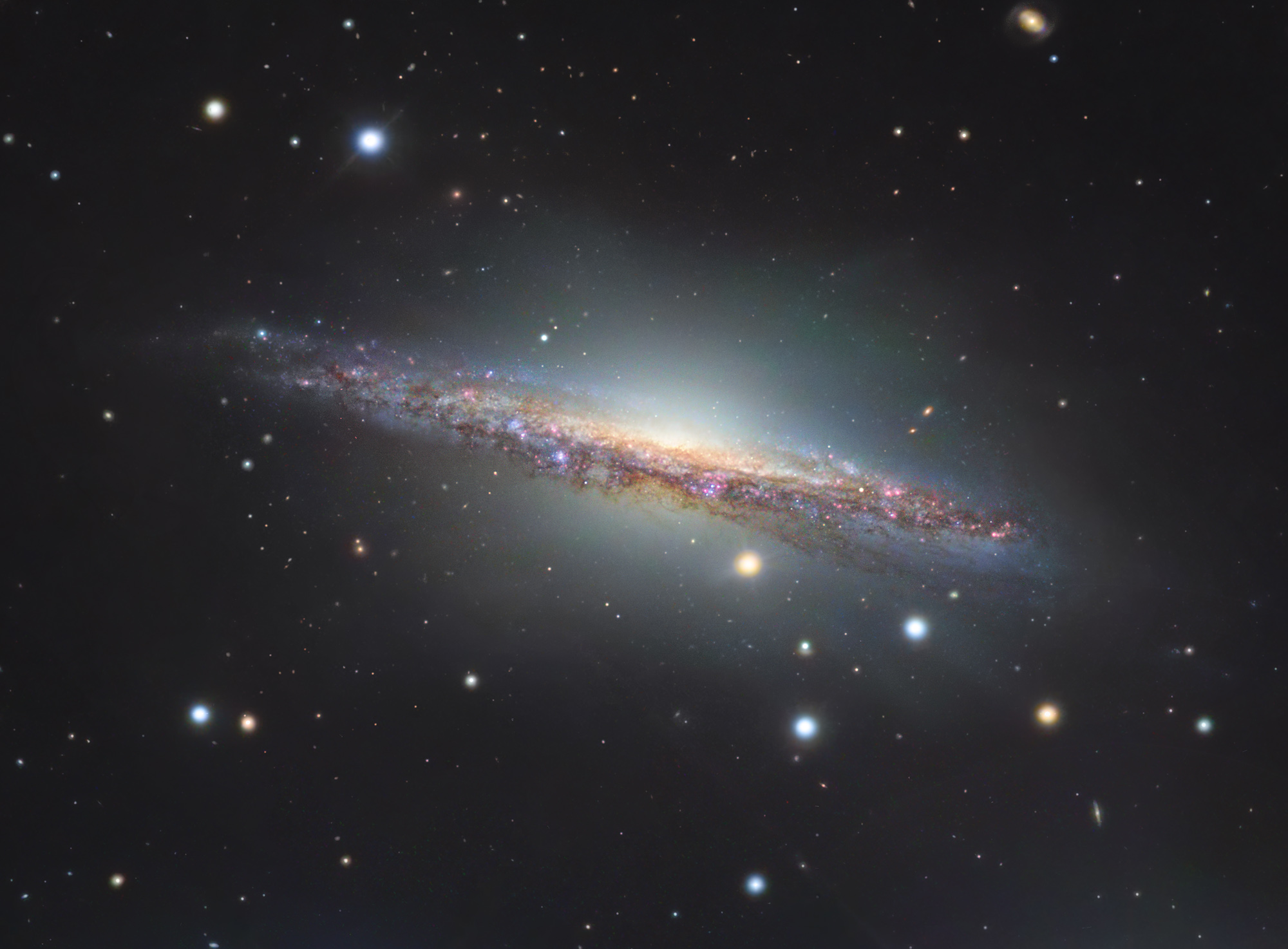
Pozdrawiam
-
 3
3
-
-
Zachwyt nad zębami - skąd my to znamy i ile wydajemy na to?

"Ich zęby były bardzo zaawansowane, takie, które potrafią przebijać, ciąć i kruszyć żywność"
Na wybrzeżu Dorest Odkryto najstarsze ssaki będące przodkami ludzi. Żyły aż 145 milionów lat temu pod osłoną nocy, jedząc owady i rośliny.
Link do artystycznej rekonstrukcji:
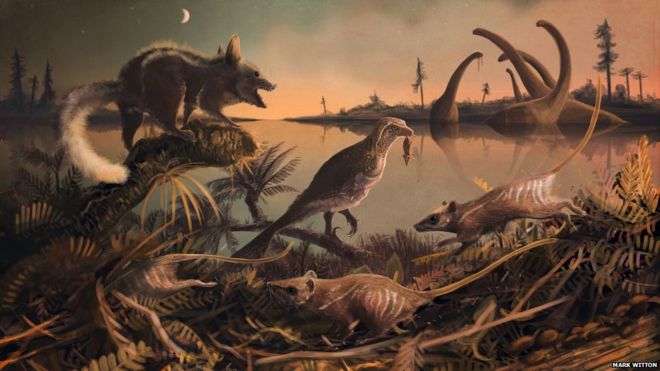
Pełny opis:
http://www.bbc.com/news/science-environment-41889633
Pozdrawiam
-
 1
1
-
-
NGC 2261: Mgławica zmienna Hubble'a
NGC 2261: Hubble's Variable Nebula
Hubble, NASA, ESA; Data: Mark Clampin (NASA's GSFC); Processing & License: Judy Schmidt
What causes Hubble's Variable Nebula to vary? The unusual nebula featured here changes its appearance noticeably in just a few weeks. Discovered over 200 years ago and subsequently cataloged as NGC 2661, the remarkable nebula is named for Edwin Hubble, who studied it early last century. Fitting, perhaps, the featured image was taken by another namesake of Hubble: the Space Telescope. Hubble's Variable Nebula is a reflection nebula made of gas and fine dust fanning out from the star R Monocerotis. The faint nebula is about one light-year across and lies about 2500 light-years away towards the constellation of the Unicorn (Monocerotis). The leading variability explanation for Hubble's Variable Nebula holds that dense knots of opaque dust pass close to R Mon and cast moving shadows onto the reflecting dust seen in the rest of the nebula.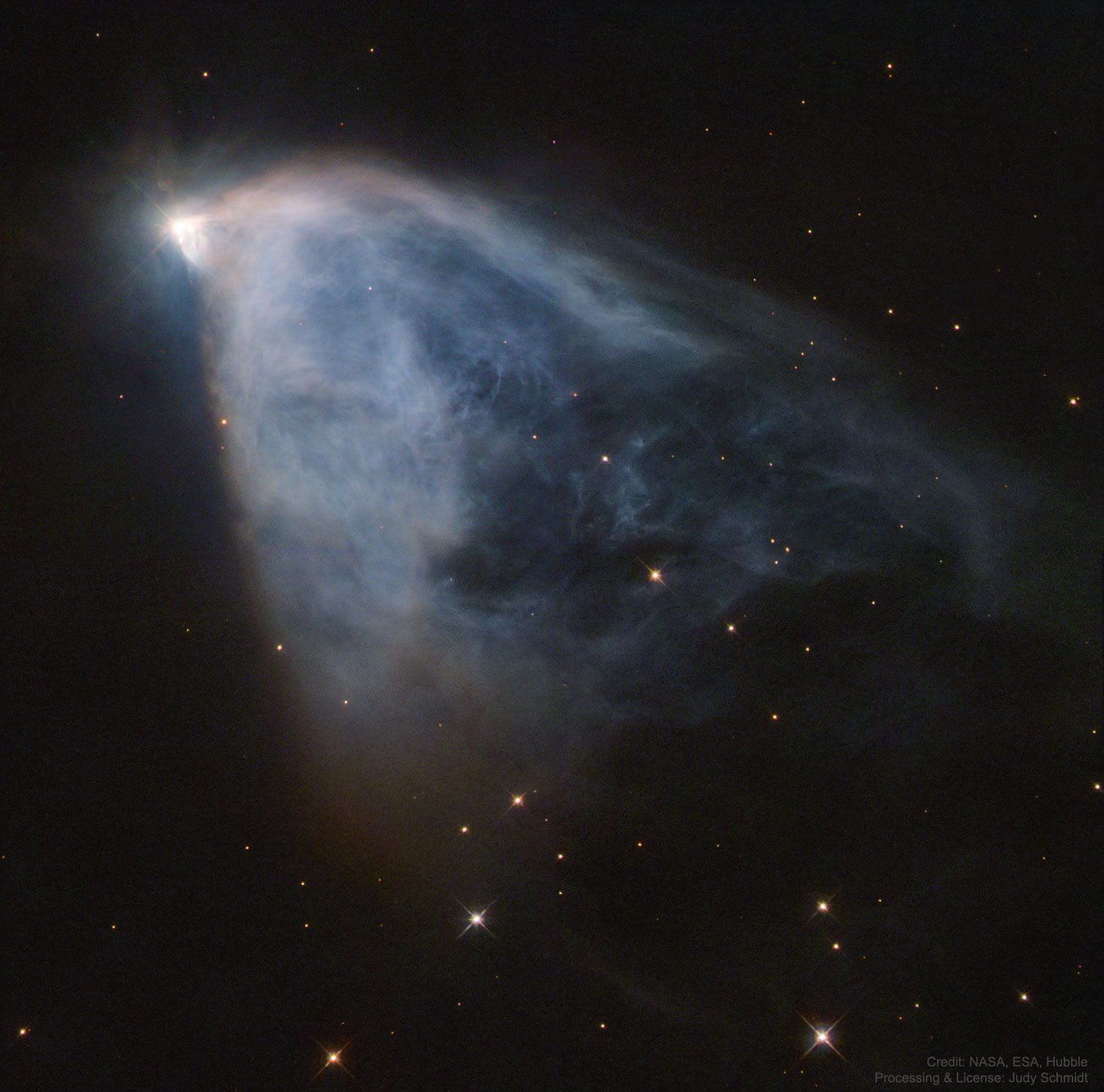
Pozdrawiam-
 2
2
-
-
12 minut temu, ZbyT napisał:
to stado już się samo oczipowało ... całkiem dobrowolnie. Mało tego, jest od tego czipa uzależnione jak nałogowiec
jeśli dojdzie do zmiany czipa to właściwie nic się nie zmieni. Pewnie niektórzy zaczną panikować bo wydaje im się, że teraz wszystko jest OK, a jawny czip będzie dla nich oznaką podległości
sztuczna inteligencja w niczym nie będzie przypominać człowieka. Nasza świadomość jest obudowana instynktami powstałymi w trakcie milionów lat ewolucji. Sztuczna nigdy taka nie będzie. Bez wątpienia będzie odmienna i z naszego punktu widzenia obca. Nawet jeśli będzie podlegać "wychowaniu" (indoktrynacji?) to nadal będzie stosować inny sposób kojarzenia i oceny faktów
ad. zaczipowane stado.
Zbyszku, nie jest tak źle. Są ludzie co dbają o swoją prywatność i na przykład nie zapisali się na Facebooka, nawet na tym forum - choćby kolega na literę S.

ad. ocena faktów przez sztuczną inteligencję.
Masz rację tym bardziej że mózg to nie tylko pseudo-dyskretne neurony i dendryty lecz wiele innych niedyskretnych rzeczy!
Pełnowymiarowa AI, a la człowiek będzie (jak już powstanie tak wydajna struktura technologiczna i ktoś zainwestuje biliony euro) będzie jednak INNA, PODEJRZANA!
Pozdrawiam
-
-
Praski zegar astronomiczny
The Prague Astronomical Clock
Jorge LáscarIn the center of Prague there's a clock the size of a building. During the day, crowds gather to watch the show when it chimes in a new hour. The Prague Astronomical Clock's face is impressively complex, giving not only the expected time with respect to the Sun (solar time), but the time relative to the stars (sidereal time), the times of sunrise and sunset, the time at the equator, the phase of the Moon, and much more. The clock began operation in 1410, and even though much of its inner workings have been modernized several times, original parts remain. Below the clock is a nearly-equal sized, but static, solar calendar. Pictured, the Prague Astronomical Clock was photographed alone during an early morning in 2009 March. The Prague Astronomical Clock and the Old Town Tower behind it are currently being renovated once again, with the clock expected to be restarted in 2018 June.

Pozdrawiam-
 1
1
-
-
Strumień pyłu z powierzchni komety 67P
A Dust Jet from the Surface of Comet 67P
ESA, Rosetta, MPS, OSIRIS; UPD/LAM/IAA/SSO/INTA/UPM/DASP/IDAWhere do comet tails come from? There are no obvious places on the nuclei of comets from which the jets that create comet tails emanate. Last year, though, ESA's Rosetta spacecraft not only imaged a jet emerging from Comet 67P/Churyumov-Gerasimenko, but flew right through it. Featured is a telling picture showing a bright plume emerging from a small circular dip bounded on one side by a 10-meter high wall. Analyses of Rosetta data shows that the jet was composed of both dust and water-ice. The mundane terrain indicates that something likely happened far under the porous surface to create the plume. This image was taken last July, about two months before Rosetta's mission ended with a controlled impact onto Comet 67P's surface.

Pozdrawiam-
 3
3
-
-
Najbardziej tragiczna była sprawa nastolatki, którą na Facebooku śledził starszy mężczyzna, podający się za jej rówieśnika. Gdy wysłała mu zdjęcie topless, szantażował ją, że ujawni je rodzicom. Doprowadzona na skraj rozpaczy, popełniła samobójstwo. Dlatego zawsze przypominam nastolatkom, że to, co wrzucają na Facebooka, jest wieczne. Nawet jeśli masz ustawienia prywatności w małym palcu, nie jesteś w stanie zapobiec temu, żeby zdjęcia przedostawały się dalej do sieci.
Link do ilustracji tezy "Współcześnie o wiele ważniejsze dla nas jest to, by wyrazić opinię, niż to, by się nad nią głębiej zastanowić (fot. bombuscreative / iStockphoto.com)"

Pozdrawiam
-
Pełnie roku
A Year of Full Moons
Talha ZiaDo all full moons look the same? No. To see the slight differences, consider this grid of twelve full moons. From upper left to lower right, the images represent every lunation from 2016 November through 2017 October, as imaged from Pakistan. The consecutive full moons are all shown at the same scale, so unlike the famous Moon Illusion, the change in apparent size seen here is real. The change is caused by the variation in lunar distance due to the Moon's significantly non-circular orbit. The dark notch at the bottom of the full moon of 2017 August is the shadow of the Earth -- making this a partial lunar eclipse. Besides the sometimes exaggerated coloring, a subtler change in appearance can also be noticed on close examination, as the Moon seems to wobble slightly from one full moon to the next. This effect, known as libration, is more dramatic and easier to see in this lunation video highlighting all of the ways that the Moon appears to change over a month (moon-th).
Pozdrawiam
p.s.
Link będzie, chwilowo daję jpg bo link nie działa potem poprawię
-
 1
1
-
-
Jako "etatowy"
 NASA APOD-o obserwator muszę przyznać, że Polish APOD generalnie jest znacząco lepszy dziś od APOD'a.
NASA APOD-o obserwator muszę przyznać, że Polish APOD generalnie jest znacząco lepszy dziś od APOD'a.
APOD tylko od czasu do czasu daje "normalne" zdjęcie kosmosu, a często wspiera się ciekawostkami popularno-naukowymi i materiałami z badań.
Tutaj widzimy zawsze zdjęcia z interesującą obróbką, błyskotliwym wyborem kadru i obiektu.
Jak chociażby powyższe Andrzeja.
To chyba w 5 minut się nie zrobiło!

REWELACJA !

Pozdrawiam
-
 3
3
-
-
Messier 5 z Hubble
Hubble's Messier 5
"Beautiful Nebula discovered between the Balance [Libra] & the Serpent [Serpens] ..." begins the description of the 5th entry in 18th century astronomer Charles Messier's famous catalog of nebulae and star clusters. Though it appeared to Messier to be fuzzy and round and without stars, Messier 5 (M5) is now known to be a globular star cluster, 100,000 stars or more, bound by gravity and packed into a region around 165 light-years in diameter. It lies some 25,000 light-years away. Roaming the halo of our galaxy, globular star clusters are ancient members of the Milky Way. M5 is one of the oldest globulars, its stars estimated to be nearly 13 billion years old. The beautiful star cluster is a popular target for Earthbound telescopes. Of course, deployed in low Earth orbit on April 25, 1990, the Hubble Space Telescope has also captured its own stunning close-up view that spans about 20 light-years across the central region of M5. Even close to its dense core the cluster's aging red and blue giant stars and rejuvenated blue stragglers stand out in yellow and blue hues in the sharp color image.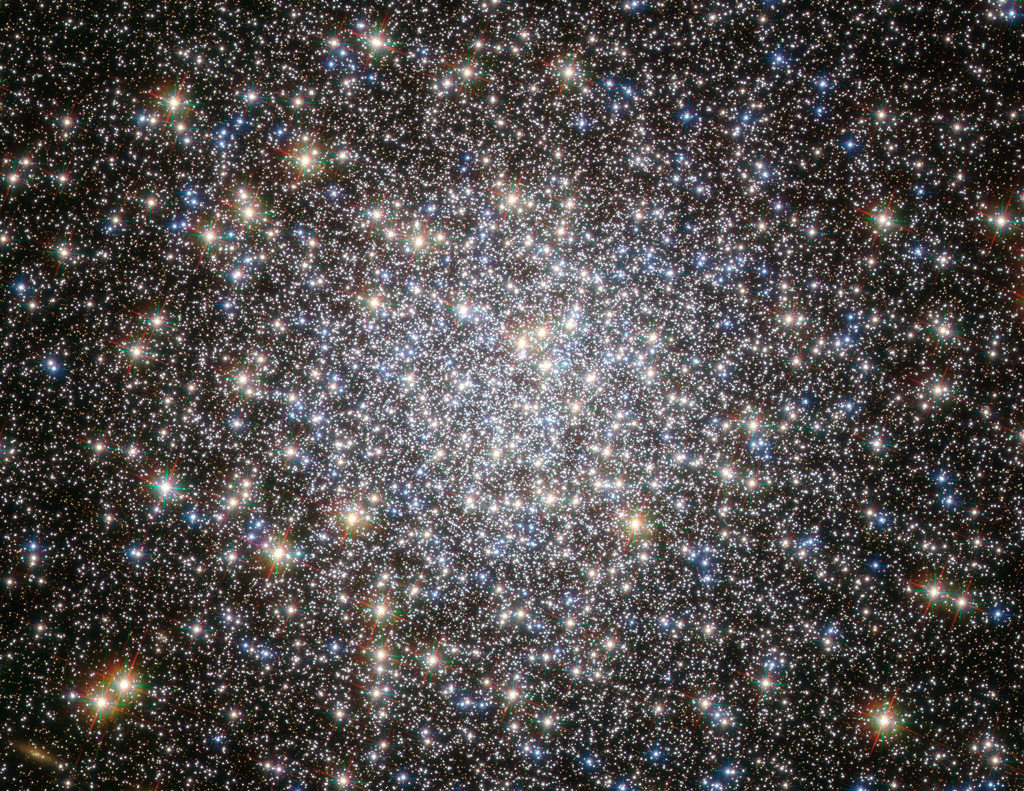
Pozdrawiam-
 1
1
-
-
http://www.bbc.com/news/science-environment-41848816
Odkryto nowy (zatem ósmy) gatunek dużej małpy żyjącej na Ziemi.
Nazywa się Orangutan Tapanuli, a wyróżniają go nawet cechy anatomiczne czaszki (nie tylko genetyczne).Małpy te oddzieliły się genetycznie od swoich krewnych Borneańskich około 650 tysięcy lat temu.
Niestety żyje ich zaledwie około 800 w pewnych górach w Indonezji czyli zostaną zapisane na listę krytycznie zagrożonych.
Można sobie wyobrazić, na ile jest to odrębny gatunek, uzmysławiając sobie jak przerażeni (lub głęboko współczujący tragicznej urody) byśmy byli gdybyśmy w kawiarni spotkali ubranego ale z odkrytą głową Neandertalczyka lub Denisowianiana.
Link do zdjęcia:
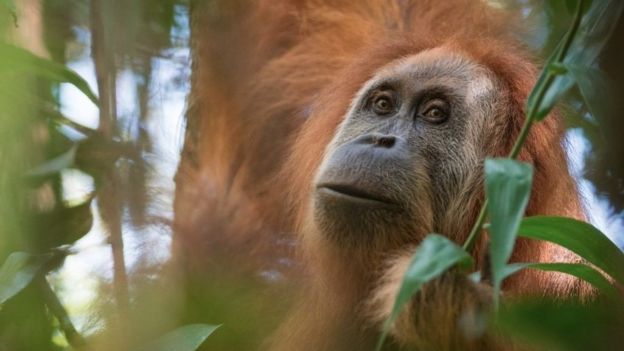
Pozdrawiam
-
Łajka została znaleziona w Moskwie na ulicy w wieku 2-3 lat. Wraz z kilkoma innymi psami przeprowadzano na niej testy, mające stwierdzić jej wytrzymałość i odporność na niesprzyjające warunki, zmiany w temperaturze i ciśnieniu.
Ostatecznie to ona została wybrana jako zwierzę, które zostanie wystrzelone w kosmos.Suczka Albina, która osiągnęła lepsze wyniki od Łajki, krótko przed lotem urodziła szczenięta i radzieccy naukowcy nie chcieli ich rozdzielać.
NAUKOWCY OKAZALI SIĘ PONIEKĄD LUDŹMI WIELKIEGO SERCA

Łajka została umieszczona w aluminiowej kapsule, w której znajdowały się przyrządy dozujące wodę i pokarm, a także usuwające parę wodną i zapewniające dostęp do tlenu. Od początku było jednak wiadomo, że ze względu na techniczne trudności Łajka nie wróci na Ziemię. Nie było też pewne, czy pies w ogóle przeżyje lot.
Sputnik 2 został wystrzelony 3 listopada 1957 r. nad ranem z kosmodromu BajkonurLink do zdjęcia z wystawy:
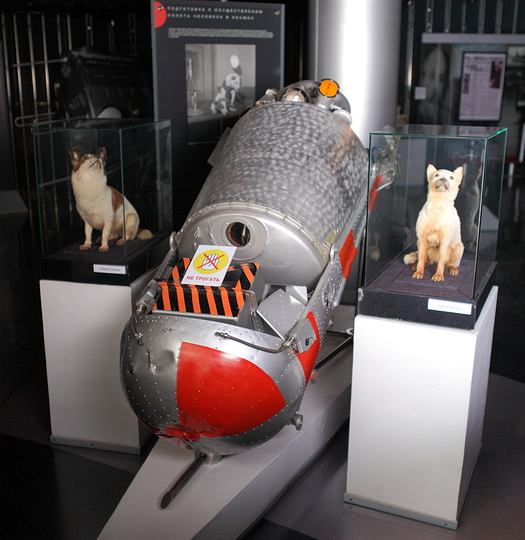
Pozdrawiam
p.s.
Jest już wiele takich historii ze zwierzętami oraz wiele planów ...







Najlepsze kandydatury egzoplanet do poszukiwania życia
w Egzoplanety
Opublikowano · Edytowane przez ekolog
http://www.bbc.com/news/science-environment-41995572
Odkryto planetę, która, z racji cech sytuacji, staje się dziś głównym celem poszukiwań dowodów na istnienie życia które powstało niezależnie od ziemskiego.
Planeta Ross 128 b jest "chłodną" planetą wielkości Ziemi, odległą od nas o 11 lat świetlnych.
Podobnie jak bliższa nam planeta Proxima b ta odkryta właśnie planeta krąży dookoła czerwonego karła (co jest faktem mniej korzystnym niż gdyby krążyła dookoła pomarańczowego lub żółtego [np Słońce] karła) ale akurat jej czerwony karzeł jest znacznie mniej aktywny (czyli "nie atakuje" życia gwałtownymi zjawiskami emitowanymi czasem ze swojej powierzchni).
Przy 1,35-krotności masy Ziemi, Ross 128 b jest nieco bardziej masywna a zrazem krąży 20 razy bliżej swojej gwiazdy niż Ziemia krąży wokół Słońca.
Ponieważ jednak gwiazda macierzysta nowej planety jest znacznie mniejsza i ciemniejsza niż nasze, "żółte", słońce, otrzymuje tylko nieco więcej promieniowania słonecznego niż Ziemia.
W związku z tym oczekuje się, że temperatura powierzchni będzie zbliżona do temperatury na naszej planecie.
Link do artystyczno-naukowej wizji widoku znad odkrytej planety:
Pozdrawiam